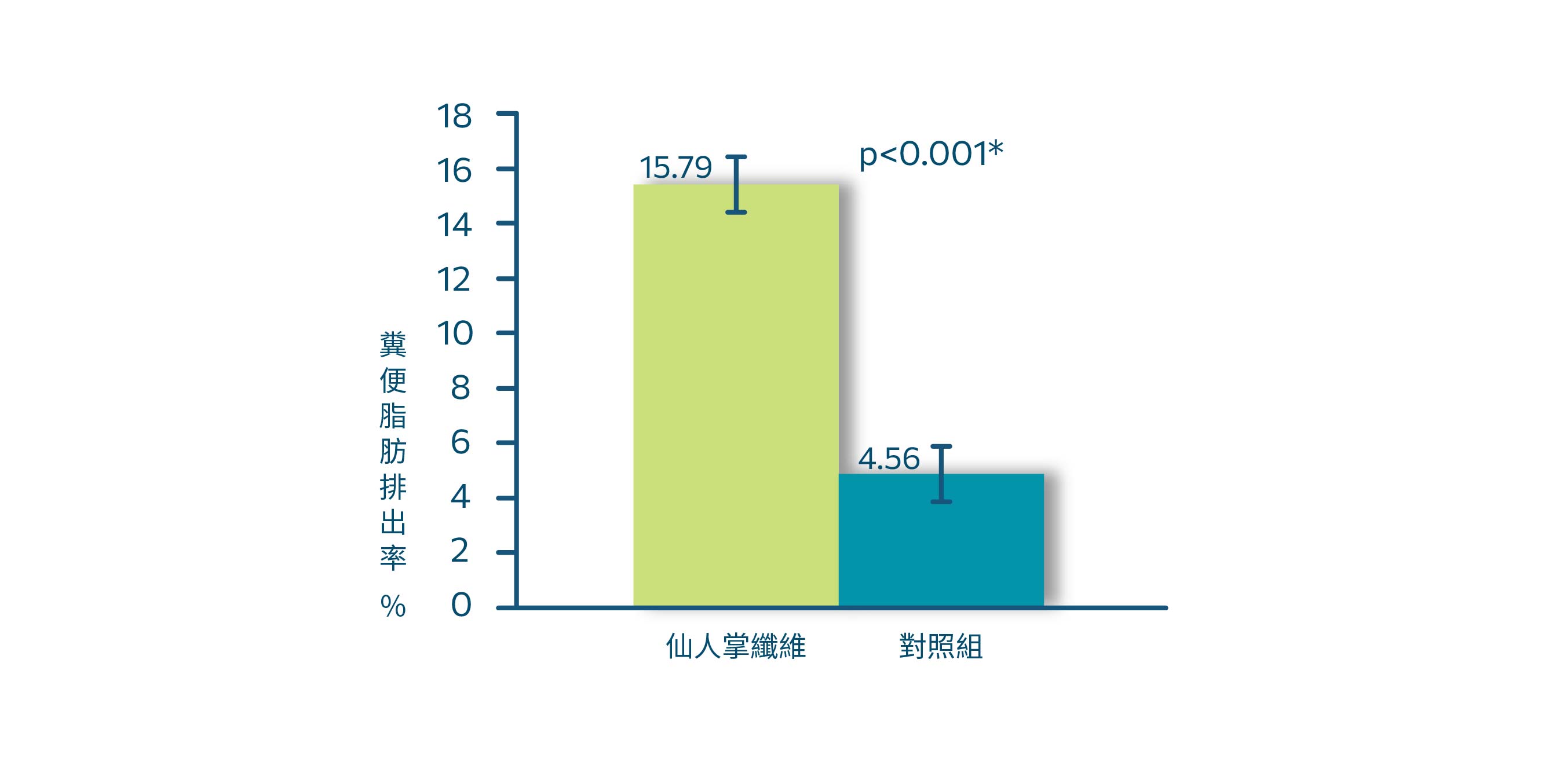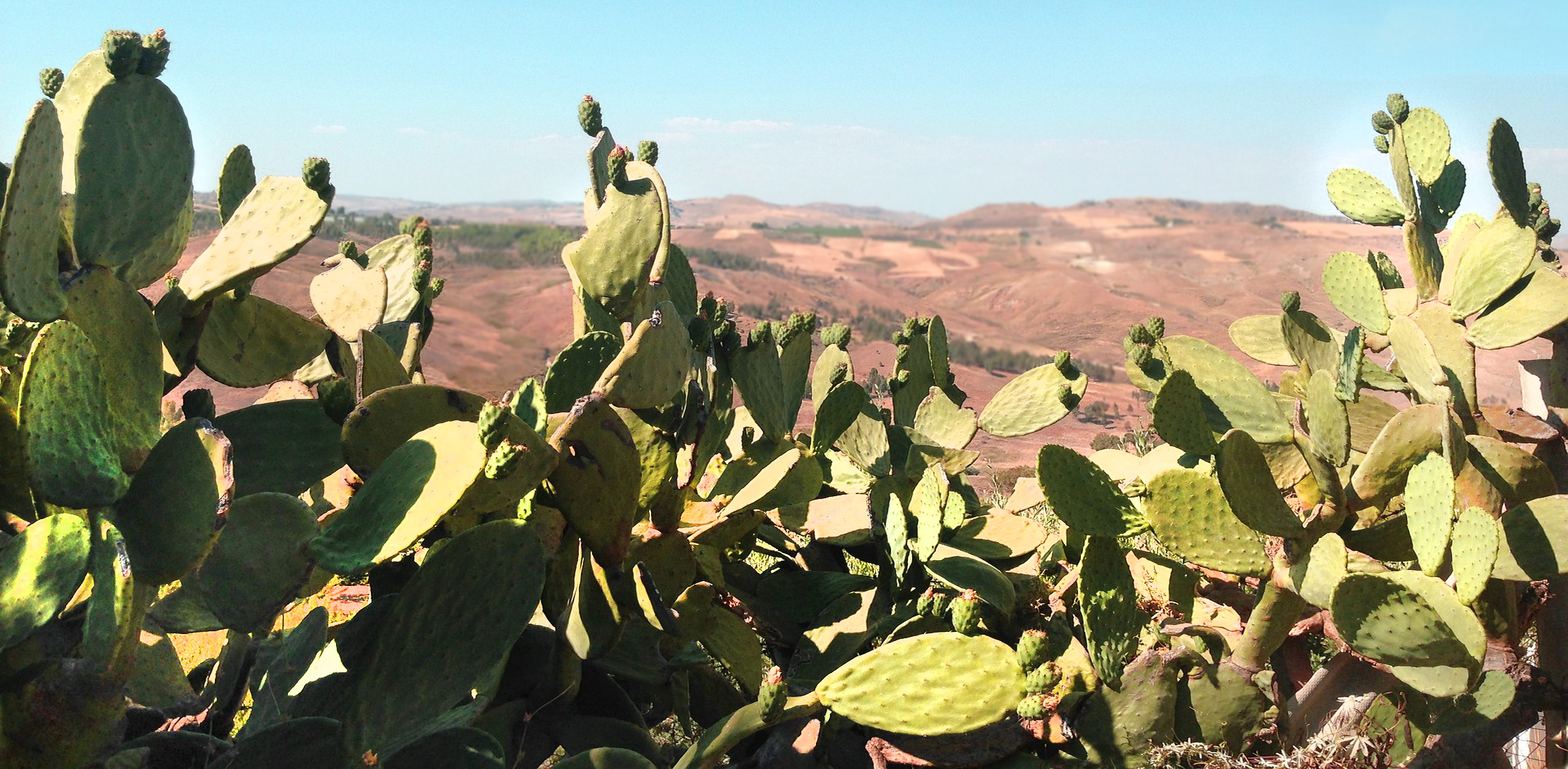最佳油脂捕手~梨果仙人掌(Opuntia Ficus Indica)
張珮蓁營養師 Dietitian Patty
說到減肥輔助食品,我們常聽到白腎豆、甲殼素,但你知道嗎?
梨果仙人掌經過萃取後,竟然具有包覆飲食中油脂的能力來達到減脂?

- 什麼是梨果仙人掌?
- 梨果仙人掌萃取物的保健成分有哪些?
- 黃酮類化合物
- 寡糖與膳食纖維
- 煙花苷 nicotiflorin
- 梨果仙人掌萃取物實證益處?
- 血糖
- 血脂及心血管
- 減脂與運動
- 癌症與腫瘤
什麼是梨果仙人掌(Opuntia Ficus Indica)?
仙人掌為生在乾燥少雨的石足目仙人掌科植物總稱,主要分佈在南美、非洲、東南亞等熱帶、亞熱帶地區的乾旱地區。種類十分多元,有 2000 多餘種。具有優良的保水適應力,為多肉植物的一類。一般具有扁平的葉狀莖,葉子則是退化成刺,在墨西哥等地,葉狀莖可作為蔬菜食用,而其他地區常見果實作為水果食用。
梨果仙人掌(Opuntia Ficus Indica)的保健成分有哪些?
◆ 黃酮類化合物
仙人掌纖維含有的山奈酚和槲皮素1,為具強抗氧化活性的黃酮類化合物,已被證實與調節發炎反應、降低血壓、血糖控制、減少血脂肪及減低心血管疾病風險有關2。
◆ 寡糖與纖維
仙人掌的植物纖維含非水溶性纖維可包覆油脂,而其水溶性膳食纖維則可增加飽足感降低飢餓感,也因為同時具有這兩種纖維的特性,使得仙人掌纖維可與腸胃中的脂肪結合,截阻脂肪被小腸吸收,並可以刺激腸胃蠕動排出體外,達到減少脂肪攝取的目的。此外,寡醣也可被細菌利用產生有機酸,促進益生菌生長,有助於腸道菌相的平衡,也可增加膽酸排泄,達到降血脂的效果。
◆ 煙花苷 nicotiflorin
仙人掌葉狀莖富含煙花苷,透過抗發炎和神經保護機制,經動物實驗證實,可減輕因缺血引起的神經功能缺損,並增加血管內皮細胞中的一氧化氮合酶,對記憶功能障礙有保護作用3。
1. 血糖控制
仙人掌葉狀莖的高纖維含量,透過影響飲食中的醣類吸收可有效減緩葡萄糖釋放到血液循環中,改善血糖控制情形以及代謝症候群的相關問題,此外,仙人掌萃取物還顯著降低了血中葡萄糖和胰島素4,為糖尿病患者及糖尿病前期或代謝症候群的一大福音。
2 .血脂及心血管
仙人掌萃取物中的黃酮類物質為強抗氧化劑,可有效減少脂質過氧化,降低心血管疾病的危險因子5。而仙人掌富含果膠為可溶性纖維,可影響肝臟膽固醇代謝機制達到降低血脂肪的效果。此外,仙人掌萃取物攝取還改善了血小板功能,從而有助於預防動脈粥樣硬化的風險6。
針對代謝症候群女性的 6 週隨機雙盲試驗也顯現以仙人掌纖維萃取物 NeOpuntia® 介入者,好的膽固醇 HDL 顯著上升,壞的膽固醇 LDL 顯著下降,且三酸甘油脂 TG 平均也有下降的趨勢。而在研究結束時,在介入組有 39% 的女性,代謝症候群的指標恢復到正常值,而不再是代謝症候群的患者7。
此外,另一實證醫學研究也顯示,以仙人掌萃取物介入代謝症候群患者 4 週,可有效減少腰圍,降低血中葡萄糖、三酸甘油酯、肌酸酐的濃度,以及降低動脈粥樣硬化有關的總膽固醇及壞的膽固醇8。

3. 減脂與運動
a. 仙人掌纖維會與我們進食食物中脂肪結合,進而降低消化吸收率,有助於減少熱量攝取並促進減肥。一項為期 45 天的雙盲隨機試驗也發現,攝取仙人掌纖維的組別,在吃一樣的飲食內容下,可增加其糞便中排出的平均脂肪量 3 倍以上,顯著高於對照組9。
b. 運動時會增加血中乳酸濃度及 creatine kinase (CK) and Lactic dehydrogenase (LDH) 及氧化壓力等,而仙人掌萃取物可增加有氧運動的燃脂效率外,還可降低因運動引起的肌肉損傷及乳酸堆積,所導致的肌肉酸痛等問題,讓運動訓練更順利10。

4. 癌症與腫瘤
因含酚類物質可提供抗氧化功能,進而抑制癌細胞發生作用,阻斷細胞內的癌症,也有助於預防因氧化傷害而造成的癌症11。經動物研究證實,可有效縮小腫瘤大小及促進癌細胞凋亡12,達到預防結腸癌的目的13。

參考來源:
1.Guevara-Figueroa, T., Jiménez-Islas, H., Reyes-Escogido, M. L., Mortensen, A. G., Laursen, B. B., Lin, L. W., ... & de la Rosa, A. P. B. (2010). Proximate composition, phenolic acids, and flavonoids characterization of commercial and wild nopal (Opuntia spp.). Journal of Food Composition and Analysis, 23(6), 525-532.
2.Tabrizi, R., Tamtaji, O. R., Mirhosseini, N., Lankarani, K. B., Akbari, M., Heydari, S. T., Dadgostar, E., & Asemi, Z. (2020). The effects of quercetin supplementation on lipid profiles and inflammatory markers among patients with metabolic syndrome and related disorders: A systematic review and meta-analysis of randomized controlled trials. Critical reviews in food science and nutrition, 60(11), 1855–1868.
3.El-Mostafa, K., El Kharrassi, Y., Badreddine, A., Andreoletti, P., Vamecq, J., El Kebbaj, M. S., Latruffe, N., Lizard, G., Nasser, B., & Cherkaoui-Malki, M. (2014). Nopal cactus (Opuntia ficus-indica) as a source of bioactive compounds for nutrition, health and disease. Molecules (Basel, Switzerland), 19(9), 14879–14901.
4.Kashif, R. R., D'Cunha, N. M., Mellor, D. D., Alexopoulos, N. I., Sergi, D., & Naumovski, N. (2022). Prickly Pear Cacti (Opuntia spp.) Cladodes as a Functional Ingredient for Hyperglycemia Management: A Brief Narrative Review. Medicina (Kaunas, Lithuania), 58(2), 300.
5. Madrigal-Santillán, E., Portillo-Reyes, J., Madrigal-Bujaidar, E., Sánchez-Gutiérrez, M., Izquierdo-Vega, J. A., Izquierdo-Vega, J., Delgado-Olivares, L., Vargas-Mendoza, N., Álvarez-González, I., Morales-González, Á., & Morales-González, J. A. (2022). Opuntia spp. in Human Health: A Comprehensive Summary on Its Pharmacological, Therapeutic and Preventive Properties. Part 2. Plants (Basel, Switzerland), 11(18), 2333.
6.Wolfram, R. M., Kritz, H., Efthimiou, Y., Stomatopoulos, J., & Sinzinger, H. (2002). Effect of prickly pear (Opuntia robusta) on glucose-and lipid-metabolism in non-diabetics with hyperlipidemia--a pilot study. Wiener Klinische Wochenschrift, 114(19-20), 840-846.
7. Linarès, E., Thimonier, C., & Degre, M. (2007). The effect of NeOpuntia on blood lipid parameters--risk factors for the metabolic syndrome (syndrome X). Advances in therapy, 24(5), 1115–1125.
8.Giglio, R. V., Carruba, G., Cicero, A., Banach, M., Patti, A. M., Nikolic, D., Cocciadiferro, L., Zarcone, M., Montalto, G., Stoian, A. P., Banerjee, Y., Rizvi, A. A., Toth, P. P., & Rizzo, M. (2020). Pasta Supplemented with Opuntia ficus-indica Extract Improves Metabolic Parameters and Reduces Atherogenic Small Dense Low-Density Lipoproteins in Patients with Risk Factors for the Metabolic Syndrome: A Four-Week Intervention Study. Metabolites, 10(11), 428.
9.Uebelhack, R., Busch, R., Alt, F., Beah, Z. M., & Chong, P. W. (2014). Effects of cactus fiber on the excretion of dietary fat in healthy subjects: a double blind, randomized, placebo-controlled, crossover clinical investigation. Current therapeutic research, clinical and experimental, 76, 39–44.
10.Khouloud, A., Abedelmalek, S., Chtourou, H., & Souissi, N. (2017). The effect of Opuntia ficus-indica juice supplementation on oxidative stress, cardiovascular parameters, and biochemical markers following yo-yo Intermittent recovery test. Food science & nutrition, 6(2), 259–268.
11.Keller, J., Camaré, C., Bernis, C., Astello-García, M., de la Rosa, A. P., Rossignol, M., del Socorro Santos Díaz, M., Salvayre, R., Negre-Salvayre, A., & Guéraud, F. (2015). Antiatherogenic and antitumoral properties of Opuntia cladodes: inhibition of low density lipoprotein oxidation by vascular cells, and protection against the cytotoxicity of lipid oxidation product 4-hydroxynonenal in a colorectal cancer cellular model. Journal of physiology and biochemistry, 71(3), 577–587.
12.Kim, J., Soh, S. Y., Shin, J., Cho, C. W., Choi, Y. H., & Nam, S. Y. (2015). Bioactives in cactus (Opuntia ficus-indica) stems possess potent antioxidant and pro-apoptotic activities through COX-2 involvement. Journal of the science of food and agriculture, 95(13), 2601–2606.
13.Antunes-Ricardo, M., Guardado-Félix, D., Rocha-Pizaña, M. R., Garza-Martínez, J., Acevedo-Pacheco, L., Gutiérrez-Uribe, J. A., Villela-Castrejón, J., López-Pacheco, F., & Serna-Saldívar, S. O. (2021). Opuntia ficus-indica Extract and Isorhamnetin-3-O-Glucosyl-Rhamnoside Diminish Tumor Growth of Colon Cancer Cells Xenografted in Immune-Suppressed Mice through the Activation of Apoptosis Intrinsic Pathway. Plant foods for human nutrition (Dordrecht, Netherlands), 76(4), 434–441.



